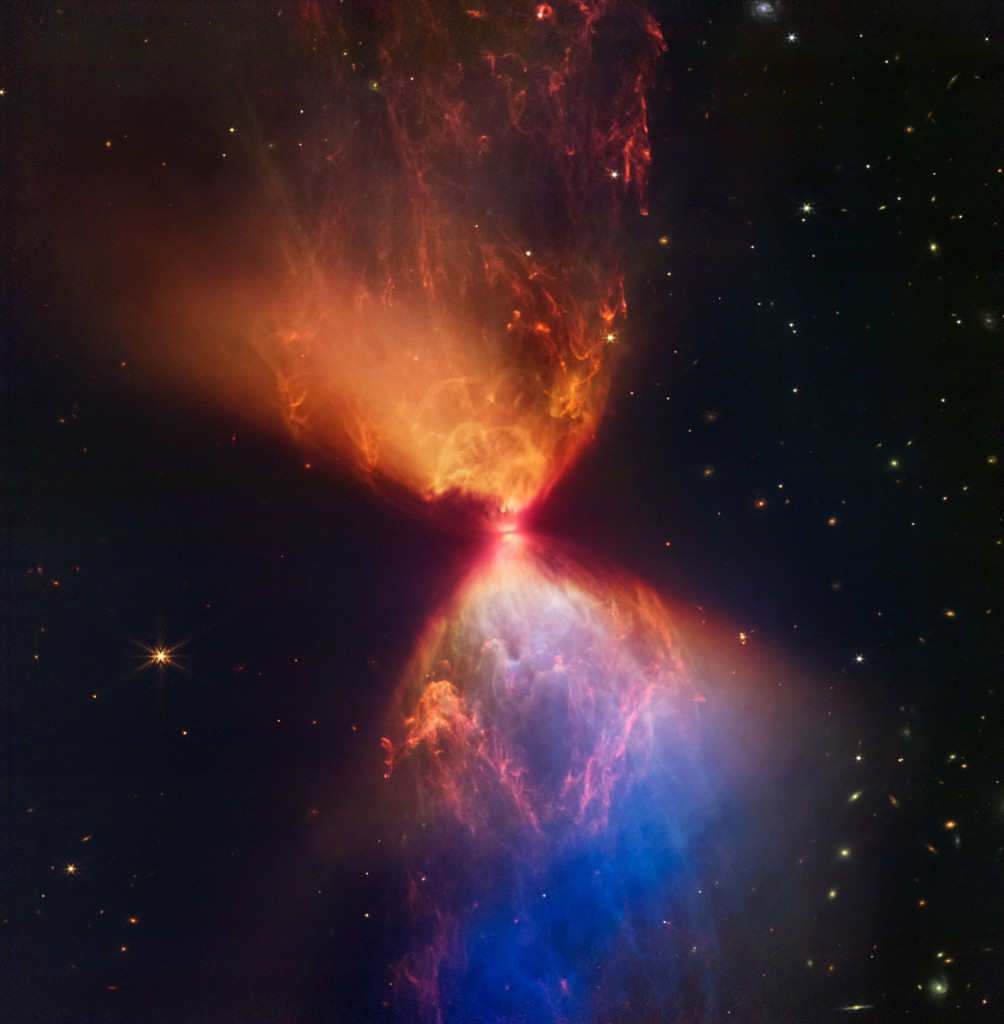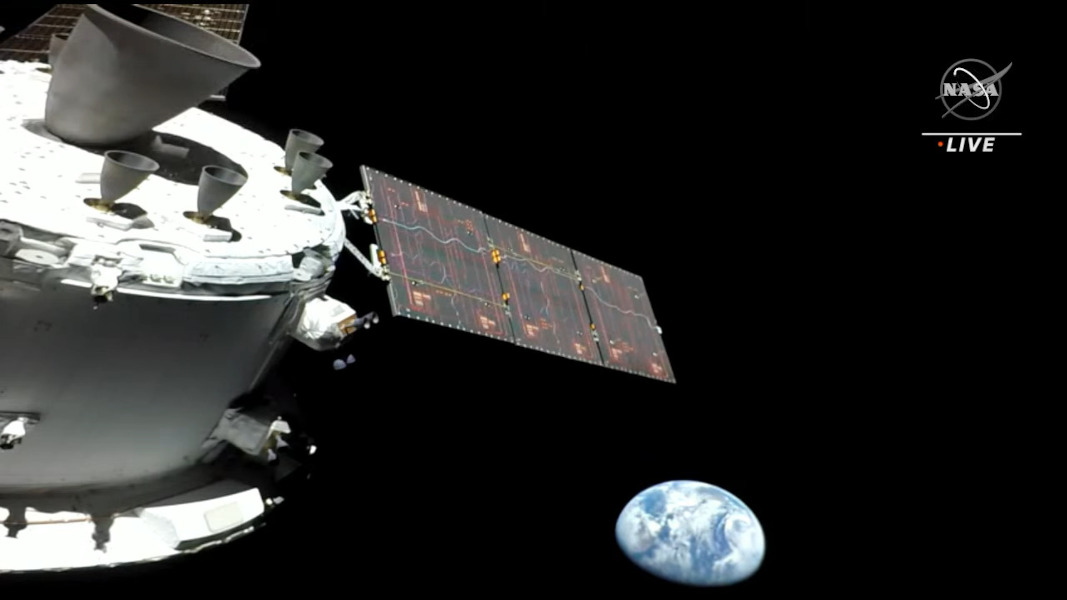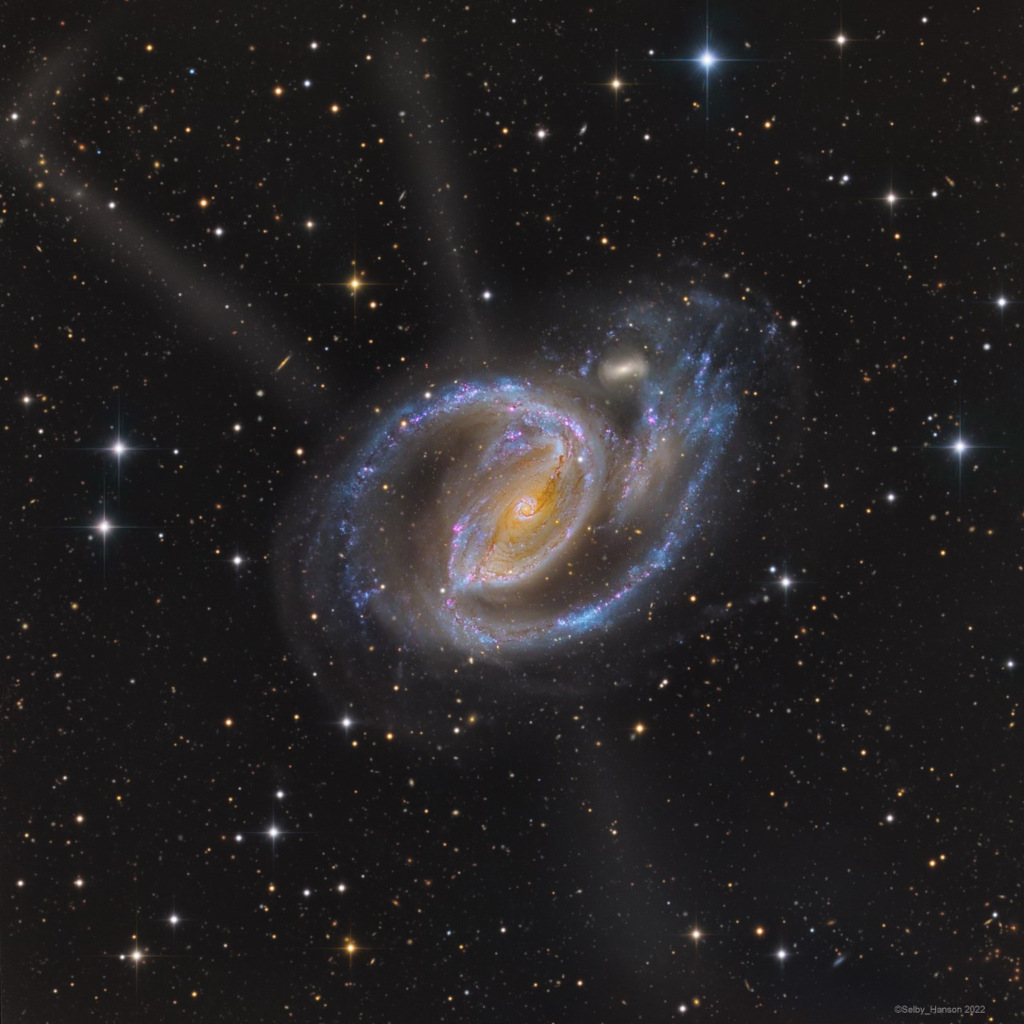안녕하세요, 잡학다식 입니다. 오늘은 과연 나사에서 어떤 방식으로 우주의 형상을 표현해 줄까요?
우선 이미지부터 볼 수 있도록 하겠습니다

해당 사진의 이름은 The Protostar within L1527 인데요 우선 NASA에서 공식적으로 발표한 설명들을 확인해 보겠습니다
The protostar within dark cloud L1527 is a mere 100,000 years old, still embedded in the cloud of gas and dust that feeds its growth. In this NIRCam image from the James Webb Space Telescope, the dark band at the neck of the infrared nebula is a thick disk that surrounds the young stellar object. Viewed nearly edge-on and a little larger than our Solar System, the disk ultimately supplies material to the protostar while hiding it from Webb's direct infrared view. The nebula itself is seen in stunning detail though. Illuminated by infrared light from the protostar, the hourglass-shaped nebula's cavities are created as material ejected in the star-forming process plows through the surrounding medium. As the protostar gains mass it will eventually become a full-fledged star, collapsing and igniting nuclear fusion in its core. A likely analog to our own Sun and Solar System in their early infancy, the protostar within dark cloud L1527 lies some 460 light-years distant in the Taurus star-forming region. Webb's NIRCam image spans about 0.3 light-years.
이번에도 광활한 우주 앞에 인간이 얼마나 작은 존재인지 다시 한번 알게 되는것 같습니다
저는 내일도 더 좋은 사진과 함께 돌아오겠습니다, 그럼 행목한 하루 되시길 바랍니다
'과학상식' 카테고리의 다른 글
| NASA 나사의 오늘의 이미지들 (2022-11-20) (0) | 2022.11.21 |
|---|---|
| NASA 나사의 오늘의 이미지들 (2022-11-19) (0) | 2022.11.20 |
| NASA 나사의 오늘의 이미지들 (2022-11-17) (0) | 2022.11.18 |
| NASA 나사의 오늘의 이미지들 (2022-11-16) (0) | 2022.11.17 |
| NASA 나사의 오늘의 이미지들 (2022-11-15) (0) | 2022.11.16 |

